Last updated on March 14th, 2024
Featured image: Hot air balloons rise over Cappadocia’s famed fairy chimneys at sunrise.
JourneyWomen share their stories of pushing past fear
By Amanda Burgess, Editor, JourneyWoman
We all have fears. Some founded, and others irrational. Some are so deep-seated that it seems they’ve always been part of us. Some of us allow our fears to hold us back, convince us to play things safe. Then there are the brave souls. They aren’t fearless—bravery isn’t about that. It’s about staring into the cavernous hole of your fears and screaming “you have no power over me.” Then taking a deep breath and doing whatever amazing thing lies on the other side of those fears.
We asked you, our fellow JourneyWomen and brave souls, to tell us about a time when you’ve done just that on your travels. What it took for you to push past fear. What experience was your reward. How it changed you. The personal growth it spurred in you. At a time when fear has a chokehold on the world, we hope that these stories will uplift you, entertain you, and inspire you to try a scary thing or two on your first travel adventure post-pandemic.
Read on for some fantastical tales of common fears and the personal growth and uncommon experiences that stem from overcoming them.
Overcoming a fear of heights through compassion
Margaret B. shares my fear of heights—one she’s had for as long as she can remember. “I don’t recall any specific incident initiating this fear, but ladders, bridges over running water, being beside a window on a tall building all make my heart thump and my knees weaken,” she says. “I fear I will somehow compel myself to fall. Strangely, flying doesn’t create the same fear.”
Her first experience overcoming that fear was in 2005 when she visited Cinque Terre, a string of centuries-old rugged seaside villages in the Italian Riveria. The landscape is rugged, with steep cliffs overlooking the sea. Paths, trains and boats connect the villages as cars can reach them via the outside only on narrow, precarious mountain roads with great difficulty. Margaret and a friend were staying at Monterosso al Mar and each day would set out by train or boat to visit other one of the villages.

A walking path in Cinque Terre, Italy.
“On the last day, we decided we ought to do at least one section of the walk, so we picked the shortest. I knew from my pre-trip research that the best photos were taken from the walking paths along the cliffs. I was pretty scared, but thoughts of the great photos I’d get spurred me on,” she says. “I hadn’t counted on my friend freezing with fear halfway around. I convinced her that we had no option but to move forward, but she could only do it by walking slightly behind me, left hand on my right shoulder, eyes mostly closed, and close to the cliff. There was no choice for me but to walk on the outside, trying not to notice the broken railing, or where the rock had crumbled away from the railing, leaving a lovely view of the ocean below, almost under my feet.”
From that experience, Margaret learned that a person can be much braver when they feel responsible for someone else. “Any parent knows that but now I know it applies to anyone we care for, or where we feel a moral responsibility,” she says.
In 2008, she travelled to Turkey with a small group tour with other Aussies. She’d always been interested in hot air ballooning, despite her enduring fear of heights. She decided to give it a shot when visiting Cappadocia.

Hot air balloons rise over Cappadocia’s famed fairy chimneys at sunrise.
“There is something magic about the thought of floating over a landscape, especially one as beautiful as the Fairy Chimneys,” she says. “I am also a keen photographer, so I couldn’t let the opportunity go by. I knew I would regret it when the balloon landed if I hadn’t been on it. I did remind myself that I was more likely to die on the road at home, or in an accident with a maniacal Turkish driver than I was in a ballooning accident. Once in the air, my ambition not to miss a good shot really kicked in. Leaning over the side of the basket to get that view did not seem so scary at all. I was a little anxious as we descended back to our landing spot, but on such a high that it was only momentary.”
That trip taught her that a strong incentive can overcome many fears. “I would never be able to go rock climbing, but I am tempted to try being a passenger in a glider,” she muses. “I think maybe I am envious of birds and their view of the world.”
Overcoming fear of injury by loosening up
Rowena L. recently spent some time in the Yukon with Wild Women Adventures and 10 other women, dogsledding and FAT bike riding.
“I believe in ‘feel the fear and do it anyway.’ Over the past five years, I’ve had to step out of my comfort zone. Or should I say I’ve chosen to,” she says. “Life is different as a single woman. I’ve found out the hard way.”
Dogsledding was never on her bucket list, but she’s someone who likes to keep her mind open to all opportunities. She felt a frisson of fear at first because the dogs were barking so loud and excitedly.
“I wasn’t certain that I would be able to stop the sled with the small back brake. You need to be able to jump on the break bar while going the right speeds and circumnavigating corners,” she says. “Once we took off, I kept saying to myself that the tour operator wouldn’t take us on an adventure that would cause harm or be dangerous. Plus, we were with a qualified Iditarod racer who has finished several times and is one of the Yukon’s best. This put my mind at ease. It was thrilling to go that fast and to know that six dogs could pull a sled with me as musher.”
Her second brush with fear came when she was riding FAT bikes through deep snow. “The tires are really fat, and it was extremely challenging to keep balance on the bike while cycling on a snow path that was very narrow. Occasionally as I would go around a corner, I would fall off the bike and end up in a snowbank. I was laughing the whole time, but it was also scary because I never knew when I was going to fall off. I didn’t want to injure myself as I’m not exactly a spring chicken.”
Sitting out in the wee hours of the morning to watch the Aurora Borealis was the most memorable part of a trip packed with thrills and overcoming fears. It was quiet, cold, crisp—and magical.
“I could hear rustling in the bushes, which could have meant that a moose was near. You don’t want to run into one of them. That kept me on my toes,” she says. “Travelling solo is character building. You never know what might arise and what you need to be prepared for. The world is exciting and full of adventure. Embrace change and go for it.”

Rowena FAT bike riding in the frozen north.
Overcoming a fear of the dark with faith
In August 2019, Ivea M. visited Rat’s Nest Cave—a cave system offering four kilometres of explored passages reached a depth of 245 metres—in Canmore, Alberta with her husband and four other adventurers, led by a female guide. It was her 27th wedding anniversary. Heading into the mass of tunnels and caves, so many fears flickered to life inside her—fear of the dark, fear of the unknown, fear that her lack of upper body strength would put her at risk.
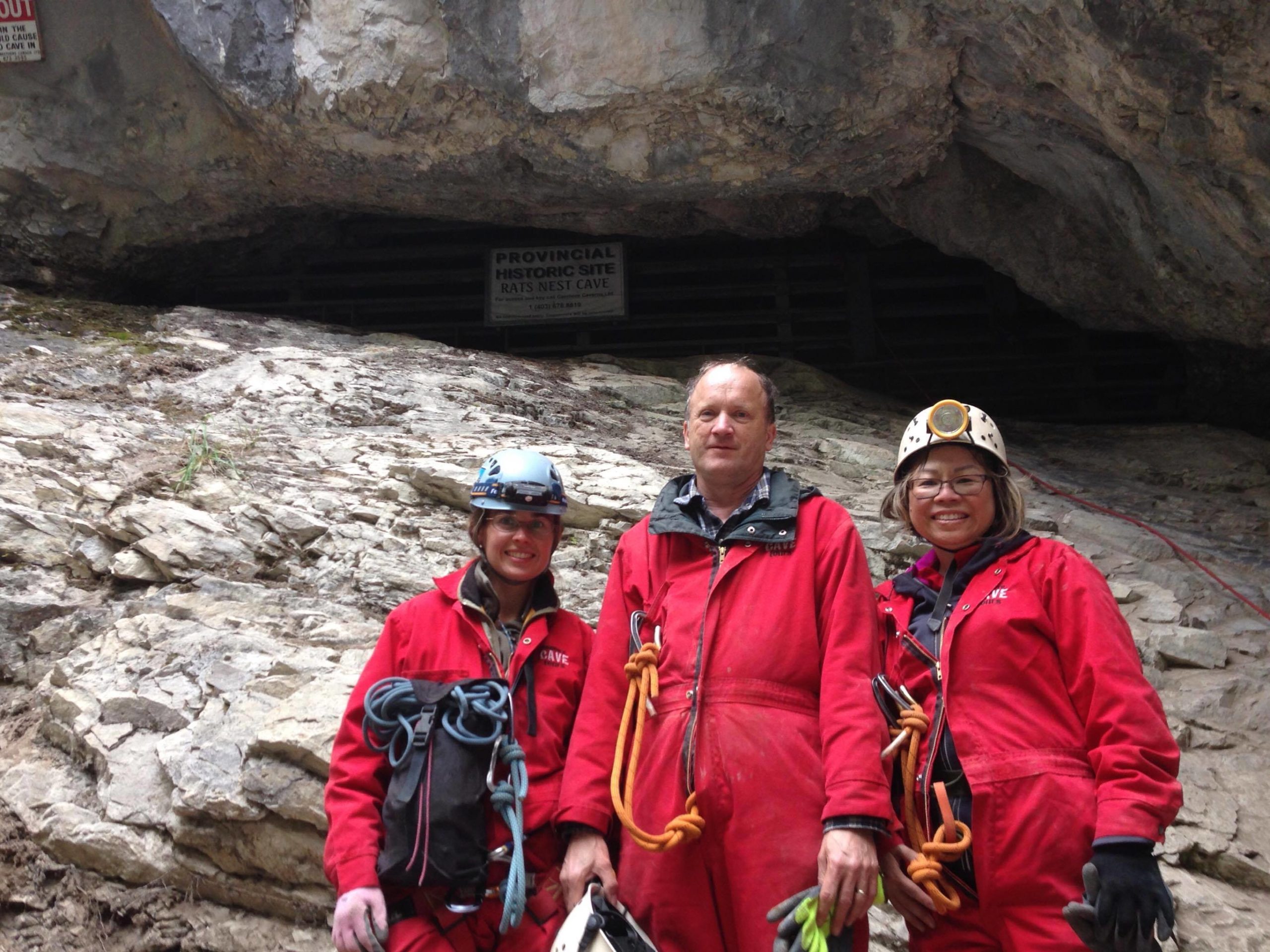
Ivea M. (right), with her husband and guide (left) at the entrance of Rat’s Nest Cave.
“Stepping into the dark abyss deep inside Rat’s Nest Cave on a rappel was the most frightening thing I have ever done because the men that went down ahead of me quickly disappeared and I couldn’t hear them, so I knew it was deep,” she says. “There were animal bones as we proceeded deeper. The caves go for hundreds of kilometres, much of it unexplored. I think the guide could see how scared I was, so she held me back until the third last, reminded me what to do if I let myself down too fast. But she didn’t say the wall would quit a third of the way down, and she didn’t say I would swing uncontrollably like a pendulum in the dark. I was terrified for a brief moment—hanging there unable to feel, swinging and turning, clinging to my ropes for dear life.”
But she had faith that there was a bottom down there somewhere, unseen. So, she kept letting out bits of rope until she stopped swinging and hit the bottom. “The most thrilling part was when my feet touched the ground. Now I know how people feel when they kiss the ground because I certainly wanted to,” she notes. “I felt proud of myself, coming down this high cliff in one piece, without any histrionics on my part.”
The group reached a large cavern full of stalactites and stalagmites, and an underground lake before moving into another cave with water flowing down the walls into a pool. “Our guide had us turn off our lamps and took out an ocarina (an ancient wind musical instrument similar to the flute) and played some tunes. We were there for quite a while, soaking in the atmosphere, the sounds of water, the purity of the air, echoes of the music,” Ivea says.” It was worth squeezing through tight spots like the ‘Birth Canal,’ the ‘Chair’ (a very tight 90-degree hole), and the ‘Laundry Chute.’”
Her final challenge was a steep and slick wall that sat at a 75 to 80-degree slant. No one was wearing climbing shoes. The fit guide shimmied up the rope, hooked in, added a second rope to another hook and came back down. Ivea knew she didn’t have the strength to haul herself up. Most of the men went first, but she had a father and his teenage son behind her. She got stuck halfway up, clinging for dear life. The two men came up behind her and pushed from below while the guide helped to haul her up.
“Humiliated doesn’t quite describe how I felt, but without their help, I would never have made it out of that cave. I was exhausted,” she says. “After the initial elation, the takeaway was that sometimes in life, we can use a boost or two and that it’s okay to ask for help. That we can’t always rely only on ourselves. That we can give help to those around us who may need it when their own resources are low.”
Tattoo Tourism: A woman traveller marks her cancer journey in ink
Every tattoo tells a story. Canadian Christine Pope’s latest tattoos tell stories of strength, resilience, hope, and life after breast cancer.
Overcoming a fear of “I can’t” by embracing “I can.”
In 2017, Marieke G. was travelling solo through Indonesia and found herself with some free time on Gili Air, a tiny island near the coast of northwest Lombok Island. She was hanging out with a woman who had completed a free-diving course and was inexplicably drawn to do it herself. Free-diving allows the diver to spend an extended amount of time underwater while holding a single breath. When training, the first level of certification is aimed at getting the student to 20 metres, with the benefit of breathing exercises to expand the lungs and slow down the heart rate before diving down and following a line attached to a lifesaver.
Marieke is a diver but didn’t believe that free-diving was something she—someone not overly fit—could do. She wanted to prove herself wrong.
“I was travelling alone, so who would know if I tried and failed? I signed up for a private two-day class, and on the first day could only make it six metres before turning back in a panic, convinced I would drown. In my head, all I could hear was ‘I can, I can, I can’t, I CAN’T, I CAN’T.’ I walked away wondering if I even wanted to go back to finish the course,” she says. “This was where my two fears met. Yes, I was afraid of suffocating underwater, but I was also faced with my fear of failure. More specifically, my fear of confirming that there were limits to what I could personally do.”
But she did go back the next day. She told herself to stop trying to aim for depth and decided not to focus on the metre markings on the rope. She would go as far as she wanted and turn back when she wanted. Since she couldn’t focus on the rope, her only other choice was to stare into the eyes of her trainer. To drown out self-doubt, she started singing La Vie En Rose in her head. Suddenly, she was at the 20-metre mark. When that struck home, the eye contact was broken, La Vie En Rose stopped playing in her head, and she panicked.
“I turned my body around, swimming towards the surface as quickly as I could. It looked so far away. That’s when the contractions started,” she recalls. “It’s sort of like a hiccup underwater, but your mouth doesn’t open. It was my body’s way of saying ‘could you breathe please.’ The panic grew and I broke the surface, gasping for air. When I could focus again, my trainer explained that my panicked swimming caused my body to use up my oxygen supply faster than I needed to.”
Marieke’s free dive
Now that she knew it could be done, she did it again, making it to the 20-metre mark while remaining calm. But the third time was the charm. “I grabbed the rope and just stayed there, in no particular rush. I was finally enjoying the entirety of the journey. The silence of the water, seeing nothing but blue, and hearing nothing but the sound of my heart pounding in my ears,” she says. “I felt completely in control. That moment changed my mental relationship with my body. I have always gone back to that moment when I find myself shying away from doing something because I don’t think my body is up for it—and it has led me to some amazing places, especially when travelling.”
Overcoming a fear of the unknown by being intentional
When Faith D. was 70, she sold her condo to travel solo for six months following a year of emotional stress.
“I remember that day clearly. I sat in my condo with the drapes closed, candles burning, staring at the walls. I was absent of any feeling of joy. I was exhausted and needed to recharge,” she recalls. “My main fear was of the unknown—solo travelling to foreign countries where you can’t speak the language and you do not know where you are going is intimidating. I had many moments of hesitation. Two months before leaving, my fear intensified. I questioned myself. What was I doing? It was scary not having any plans after the first two months.”
Faith had many conversations with herself. Took a drive to a peaceful lake. Sat in solitude and cried. She knew she needed and wanted this trip. A book she’d read about transformative solo travel suggested setting three intentions. “My intentions were healing, find myself outside of how the world sees me, and self-care,” she says.
She began her journey in Nice, France.
“I took long walks and ventured to unknown places. I walked along the corniches high above the sea. The energy permeated my spirit and I started to feel better than I had in a long time. The freedom was exhilarating.”
Over her six-month adventure, Faith visited Romania, Hungary, Poland, Spain, Turkey and Russia. When she returned to the US with the intention of deciding where to live, she quickly realized that she wanted to continue to travel. For the next five years, she travelled four months of the year in Europe and rented a temporary home in the US for the remainder. In 2018, she spent eight months in Europe. In September 2019, she brought her journey full circle by moving to Nice, France.

Joy overlooking the Bosphorus and Galata Tower in Istanbul, Turkey
From the experience, “I learned that courage was not the absence of fear, but the triumph over it. I allowed myself to feel the fear, but not to worry about the outcome and to be prepared for unexpected events,” says Faith. “Solo travel is transformational. You change, and you cannot return to who you were. Travelling solo allows the freedom to follow your own path, to be lost in contemplation and to get to know yourself and enjoy your own company. Travelling to countries, learning transportation options and meeting people from different cultures helped build my self-confidence. After years of multitasking and looking to the next item on my agenda, I lived in the moment. I learned to slow down and hold that breath for two seconds longer. The only time is now. The only place is here.”
As for me, your adventure-loving Editor?
I have an enduring fear of heights—or more accurately, a fear of falling. I’ll suck it up if the experience offers an adrenaline rush. But when that payoff isn’t there? Well…let’s just say I once sunk to my knees and crawled in front of my colleagues, client and an entire film crew on Vancouver’s Capilano Suspension Bridge where we were filming a TV spot.
In February, as part of a two-month solo adventure, I took myself on an 11-Day South Island Adrenaline Junkie tour from Christchurch to Wellington in New Zealand with small group operator Haka Tours. This had it all—skydiving, cave tubing, glacier climbing, canyoning and more. In a swaggering move, I said yes to nearly all the activities on offer, sight unseen.
And was nearly defeated on our first day in Queenstown—the adventure capital of the world—when our group decided to race the mountaintop luge. Confession: I am terrified of cable cars. Perhaps I met my end on one in a previous life, or it could simply be tied to my fear of heights. Whatever it is, being on one gives me sweaty palms, a racing heart, and a near-irresistible desire to curl into the fetal position on the floor of the pod. The risk-reward ratio simply isn’t high enough.
To be fair to my fear-gripped self, the Queenstown Gondola is no joke—it’s the steepest cable car lift in the Southern Hemisphere. We’re talking a near-vertical climb. And the luge track is another chairlift above it. I felt a buzz of fear and anxiety build to a crescendo in me, making my breath shallow and my heart pound. Since I flat out refuse to give fear unchecked power over me, I closed my eyes and connected to my breath—my fellow adventurers watching me reign it in with interest and empathy. Had to do the same all over again on the chairlift to the luge track.
On the other side of my fears lie 800 metres of serpentine mountainside track with steep gradients, banked corners, dippers and cuttings offering some of the most spectacular mountain and glacier lake vistas you’ll ever see. We all jumped into specialized luge carts (essentially a sled on wheels with steering and braking mechanism), competitive streaks emerging in our five-run race to the bottom.
With adrenaline and thrill coursing through my veins, all vestiges of fear dissipated, and my eyes stayed wide open on the chairlift and cable car, drinking in the views. That’s how I moved through the next 10 days, with eyes open and a buzz of excitement building in me before every adventure. Exposure therapy in the extreme. It showed me that fear always serves a purpose. We’re not meant to rid ourselves of it but learn to reign it in and ride it. It gives us a breath-filled pause to check in with ourselves and ensure that what we’re about to do is something we want—something that will serve us. And when it is, the only choice is to leap.
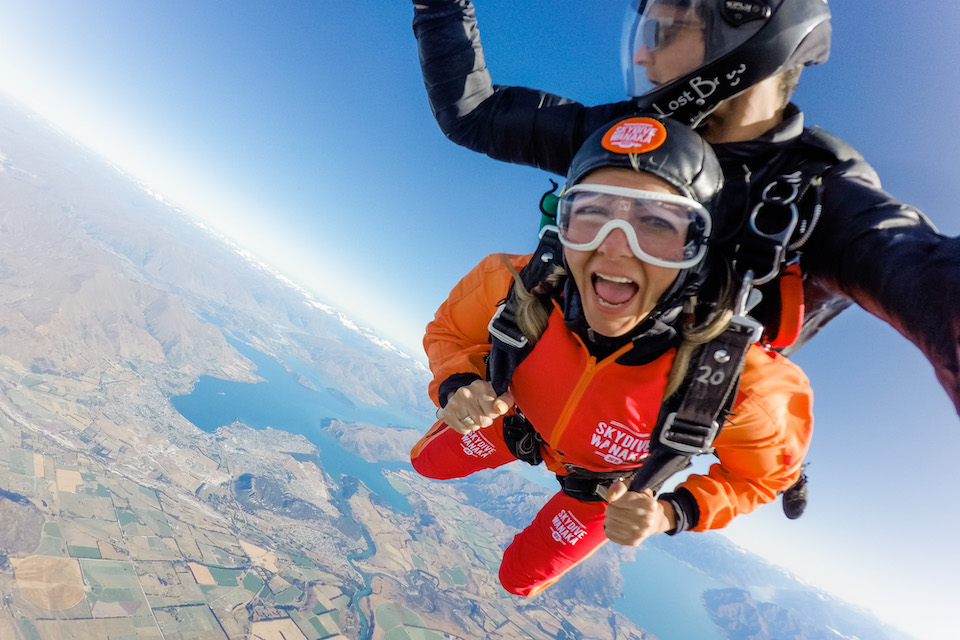
Key Takeaways from our Fear-Kickers
- There are times when you should heed the evolutionary advice you come equipped within your DNA—and times to push through fear and do the damn thing.
- With a strong enough incentive, you can squash any fear like a bug.
- When you focus on helping others, your own fears fade away. It’s tapping into the collective—key to human survival.
- When you are brave enough to ask for help, you don’t feel alone. Fear likes to make you feel that way.
- When you can laugh at yourself, you loosen up—and fear loses its grip on you. And suddenly, you can breathe and think more clearly.
- “I can’t” is absolute. It’s a fear-fuelled phrase our ego throws up in defining moments to keep us stuck. Combating that with “I can” opens up possibilities and progress.
- Fear always serves a purpose. We’re not meant to rid ourselves of it but learn to reign it in and ride.
- You’re stronger and more capable than every past iteration of you believes. They’re limited by what they knew. You are more. So be more.
More Stories to Inspire You
How to Travel Solo in Your Own City: Ten Tips to Fire up Your Inner Wanderer
Yes, you can travel solo travel in your own city or country. Here are nine tips to get you started on your adventures!
The Top Once-in-a-Lifetime Travel Experiences Every Woman Should Have, Including the Northern Lights, Camino de Santiago and More
The Once-in-a-Lifetime Travel Experiences every woman should have, including the Northern Lights, Camino de Santiago and more.
Women Share Their Best “Once-in-a-Lifetime” Solo Travel Experiences
Once-in-a-lifetime travel isn’t just about the destination, it’s about adventure, learning, and journeys of the soul.
How Women Find Healing and Renewal in Solo Travel
When faced with loss or grief, we intuitively turn to travel for wellness and healing, as shown in these inspirational stories of renewal.
Rediscover Toronto with the Honourable David Crombie, Former Mayor of Toronto
Former Toronto Mayor, the Honourable David Crombie, shares his insider tips to rediscover Toronto’s ravines, waterfront and green spaces.
March of the World-Famous Peabody Ducks: Adventures in Memphis
Women travellers can become a duckmaster for a day by walking the red carpet with the famous Peabody Ducks.
JourneyWoman Webinar: Small Ship Cruises With Aurora Expeditions
Join a special webinar on March 11 to learn about Aurora Expeditions small ship cruises, all-women trips and commitment to solo travellers.
Staying Safe in a Digital World: How Women Can Protect Online Privacy
Advancements in artificial intelligence (AI), facial recognition, wearable technology and apps are making it easier for strangers to learn personal details about us – without our consent.

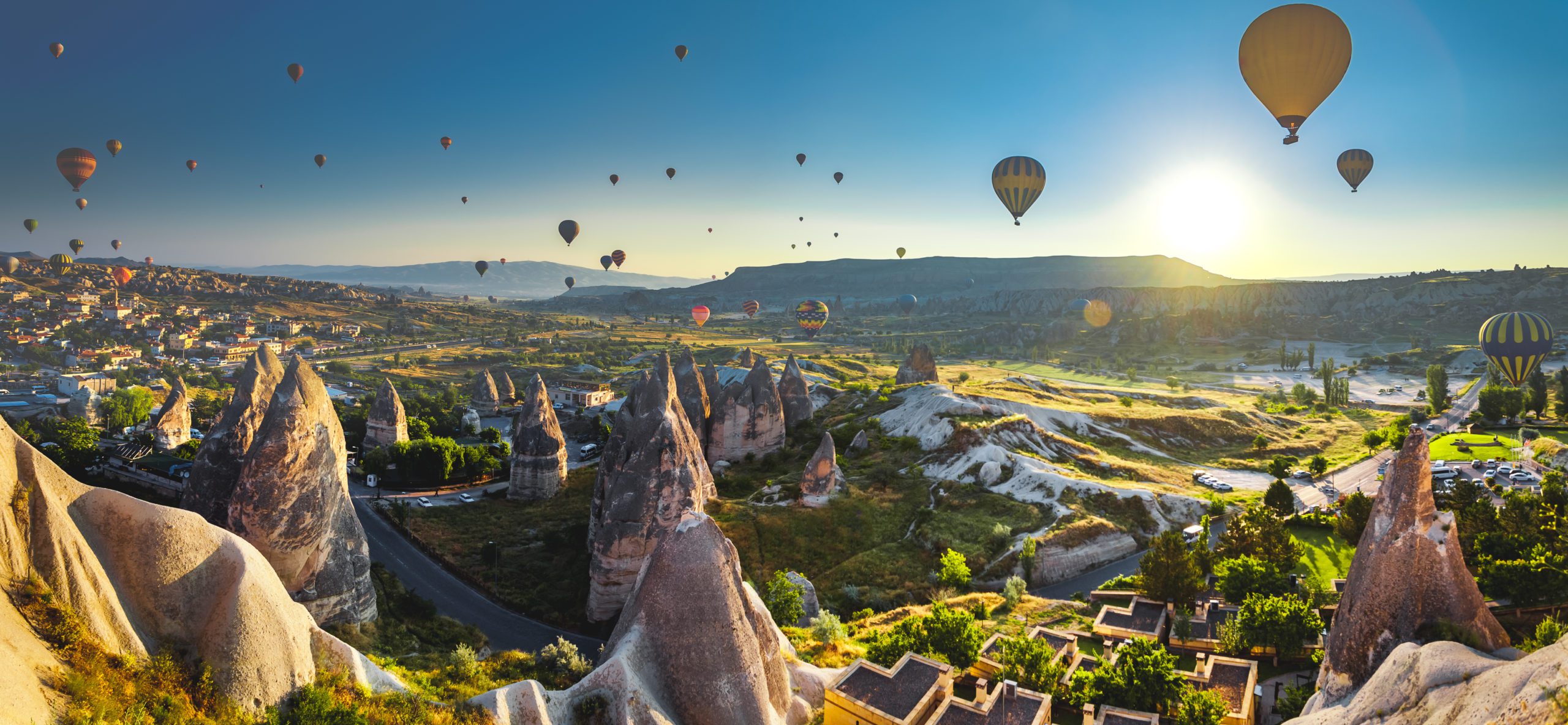

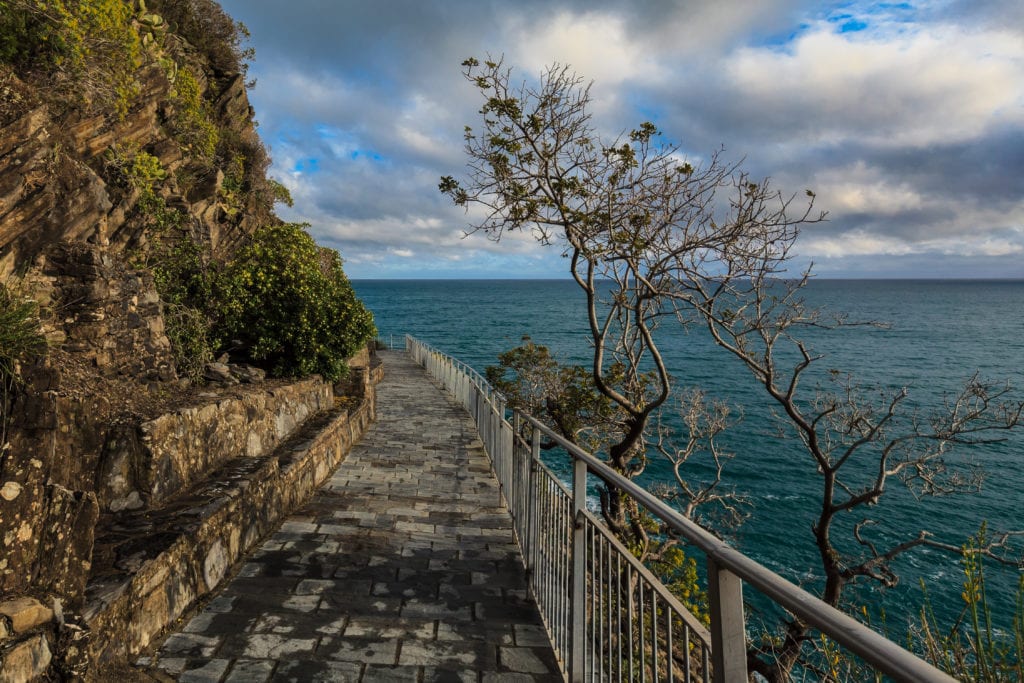
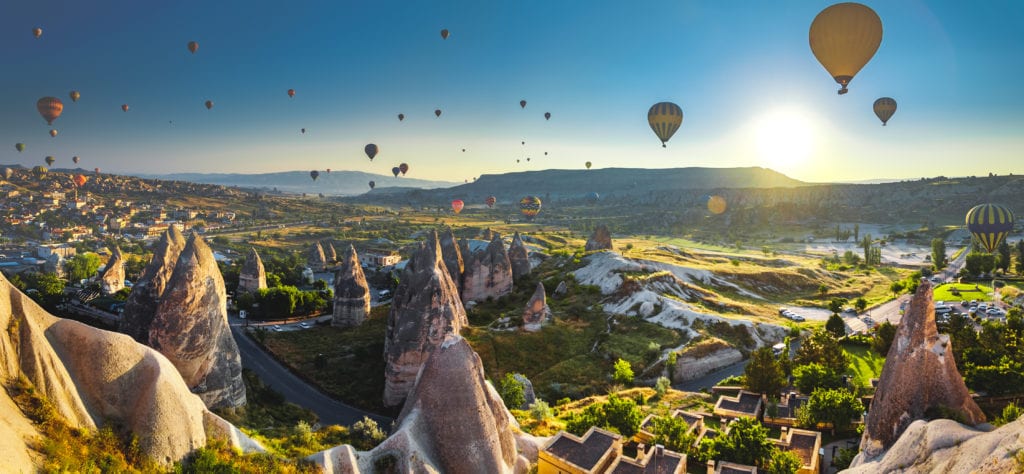

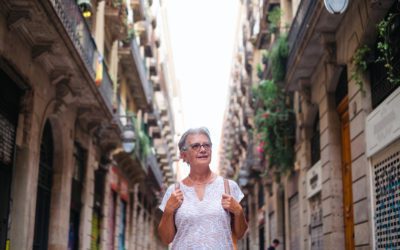
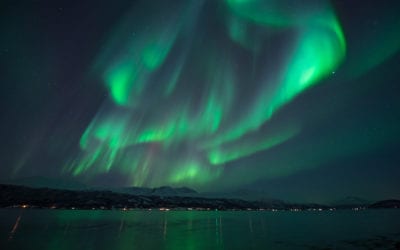

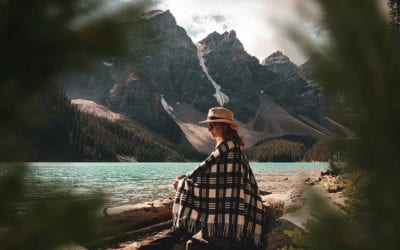


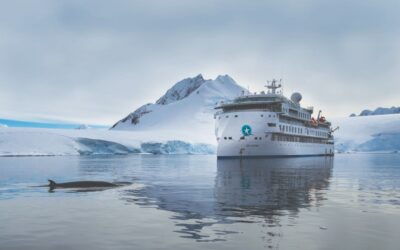

0 Comments
We always strive to use real photos from our own adventures, provided by the guest writer or from our personal travels. However, in some cases, due to photo quality, we must use stock photography. If you have any questions about the photography please let us know.
Disclaimer: We are so happy that you are checking out this page right now! We only recommend things that are suggested by our community, or through our own experience, that we believe will be helpful and practical for you. Some of our pages contain links, which means we’re part of an affiliate program for the product being mentioned. Should you decide to purchase a product using a link from on our site, JourneyWoman may earn a small commission from the retailer, which helps us maintain our beautiful website. JourneyWoman is an Amazon Associate and earns from qualifying purchases. Thank you!
We want to hear what you think about this article, and we welcome any updates or changes to improve it. You can comment below, or send an email to us at [email protected].